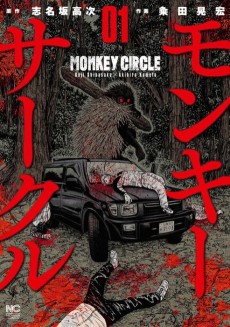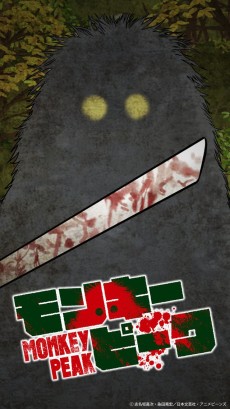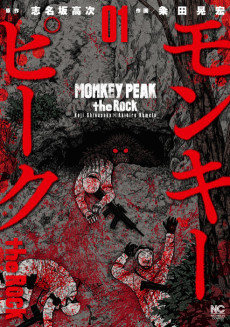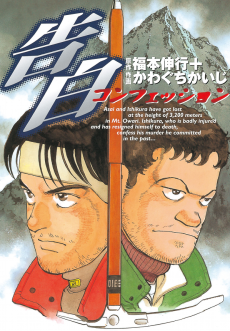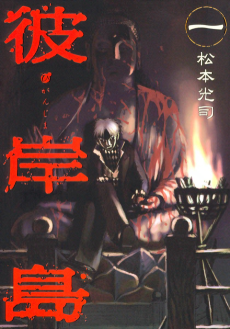MONKEY PEAK
STATUS
COMPLETE
VOLUMES
12
RELEASE
August 23, 2019
CHAPTERS
120
DESCRIPTION
A group of company employees on an overnight hiking trip starts to get harassed by a murderous demon monkey.
CAST

Saotome
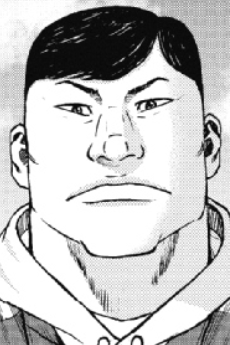
Anzai
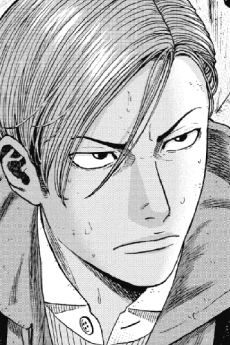
Miyata

Hayashi

Satou
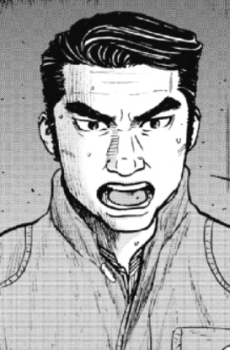
Hasegawa

Himuro

Fujishiba
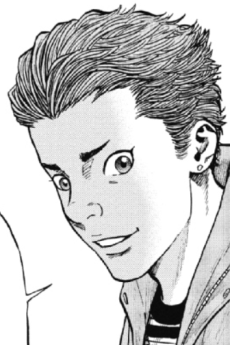
Iizuka

Okajima
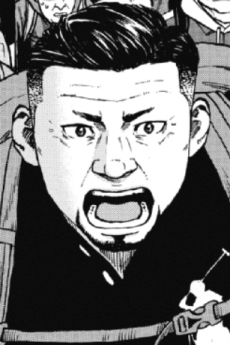
Tomihisa

Minami
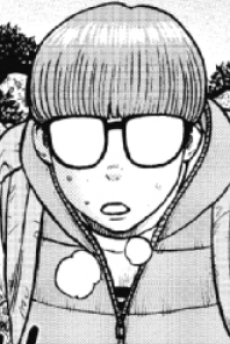
Toono
CHAPTERS
RELATED TO MONKEY PEAK
REVIEWS

obskyr
60/100This story is like descending a mountain: it starts high up, and then it's all downhill from there.Continue on AniListI've read the manga from start to finish, 120 chapters, in Japanese – so this is a review of the story in its entirety. Spoilers will be hidden using the spoiler feature – but the spoilers only contain specific examples, so the review is completely understandable without expanding spoilers as well!

🙞 Monkey Peak 🙜 Monkey Peak is about a group of employees of a medical company – Fujitani Pharmaceutical – who go on a team-building company trip into the mountains after the company was embroiled in a malpractice scandal. What what supposed to be an easy overnight hike turns into a several-day survival endeavor when a genocidal, demonic monkey traps them in the mountains and starts killing them, one by one.
Though it may seem like the manga would be filed under the genres “horror” and “mystery”, I would sooner categorize it as a survival thriller. It has its ups and downs, so let's climb this mountain together!
☙ The Climb ❧ Reportedly, this is a recent work in the “mountain-climbing manga” genre – a genre I didn't know existed. It does, though, and Monkey Peak decidedly walks in those footsteps: though the monkey is plenty dangerous, what truly makes an impression is the peril of the mountain. Woefully unprepared for such a treacherous trek, the employees have to contend with dehydration, starvation, foot injuries due to unsuitable shoes, rockslides, and broken bones. As a survival story, it's briskly paced, highly varied, and fascinating, and the monkey spices it up – after all, if you're going to learn about the hardships of mountain climbing, why not do it with a psychopathic simian on the loose?

Making use of the setting, the manga presents readers with a route map of the mountain, which displays paths and landmarks such as peaks and lodges. This is a fantastic decision with a deceptively large impact on the reading experience! With the locations laid out in advance, it gives the impression that the entire story was planned out in advance. Of course, this isn't necessarily the case – though the locations are fixed, what will be found there is still up in the air – but nevertheless, providing the reader with a docket of where the story will go ensures that twists rarely feel like they came out of nowhere. It's also rewarding to imagine what a place might be like, and then find out the reality of it several volumes later! The map provides yet another affordance: it allows you to reason around the story. By comparing where the characters are going to the map, you can foresee some things in advance – “they're going the wrong way”, “that way, this kind of danger might await them”, etc. – which is highly rewarding.
The map isn't the only source of foreshadowing. The author is quite smart, and typically foreshadows twists sufficiently in advance. The observant reader is rewarded: if you notice something odd – ranging from obvious story things such as “why is this character always suggesting bad ideas”, to subtler things only visible in the art such as “why does this character look so unsettling” – chances are it'll become relevant later. This manga was made by a writer-artist team, but you wouldn't think so: the art conveys plot details that aren't mentioned in text, in a masterful display of writer-artist collaboration.
The art also serves one of the manga's strongest characteristics: exciting moments. Owing to the grounded setting, these moments hit harder than they would in a fantasy manga. I don't tend to care much for action, and even I found myself clapping my hands and yelling. I've lost count of the number of times someone pulled off a ridiculous maneuver, resulting in a moment that can only be described as “hype”.
(Spoiler: My favorite action moment in the manga.)
 The main character is shot in the face with an arrow.
The main character is shot in the face with an arrow.
 THE GUY *CAUGHT* AN *ARROW* WITH HIS ***TEETH!!!***
THE GUY *CAUGHT* AN *ARROW* WITH HIS ***TEETH!!!***
**☙ The Descent ❧** Now that we're at the summit, there's only one way to go: down. And down the story goes. Especially ⅔ of the way through the story, around volume 8 (which at the time of writing hasn't been translated into English in any capacity), significant fissures start to show.
Monkey Peak fancies itself a mystery story. Why is the monkey doing this? Who is the monkey? Who's the traitor? Some of the mysteries it presents, it never answers. Others are answered, but in the most predictable way. I personally didn't mind this much – I wasn't reading for the mystery – but if you're invested in it, this may be disappointing.
What I did mind was the characters. The story has two types of character development. The first type is “turning villainous”. A lot of time is spent developing people into evildoers and charlatans who use and abuse the others. Conversely, little time is spent on neutral or morally good characters, who are relegated to another unpleasant type of character development: epiphany, followed by heroic sacrifice. Time and time again, someone will have a flashback to their tragic past, decide to overcome their problems, and immediately use that determination to launch a suicide attack. Not only does this feel dreadfully clichéd, but it's a shame that we rarely if ever get to see a character grow and continue to partake in the plot in their developed form. The tender moments when characters truly connect are sweet, but brief and vanishingly scarce. Faced with such overwhelming adversity, it would be nice to see camaraderie bloom every now and then… but this doesn't happen, lending the story a faint tinge of misanthropy. More palpable than the misanthropy, though, is the characters' stupidity.
(Spoilers: examples of the most unsatisfying character arcs.)
• A young man named Iizuka manipulates and psychologically abuses two women – Sato and Fujishiba. For 80+ chapters, no one stands up to him… and then he dies. I suppose the author may have intended death to be sufficient comeuppance, but the fact that he never has to face what he's done – and in fact, no one even knows that he's done this – turns it into a plotline that simply… fizzles out.
• Meanwhile, after having been abused for 80+ chapters, the aforementioned Fujishiba dies of hypothermia. No justice; no moment when she stands up for herself. Then, in a particularly tasteless development, her body is undressed and thrown off a cliff. All it serves to do is make the reader feel bad.
Stupidity isn't a plot hole. People constantly make poor decisions. One might even say stupid decisions is a mainstay of the horror genre. On the other hand… as other works in the genre have proven, if there's an overabundance of stupidity, it's only frustrating. Bit by bit, Monkey Peak builds up such an overabundance. In addition to being exceedingly unskilled in deducing who is to be trusted and not, the characters continuously go deeper and deeper into the mountains. Although the aforementioned map makes it clear that this was the plan all along, the way in which this happens feels far-fetched, and lends the story the feeling that it's being drawn out – perhaps due to it being a commercial success.
(Spoiler: Examples of particularly egregious stupidity.)
• At the very start, the party chooses to continue to the first peak rather than head back to the hot spring exit they were originally going to. No reason for this is given but “the monkey is behind us” – but then, when they've only just set off, they learn that the monkey can appear anywhere, at any time… and they forge on. Despite it being shown that the way forward will be no safer, and in fact is far longer.
• Throughout the story, the characters consistently believe that there's a traitor among them who is working with the monkey. The reason for this belief is that Tsuji, an accountant at the company, was killed by a human – so Anzai (a particularly insane character) suggests the traitor hypothesis. However, when they find out that she was killed out of a personal grudge – no relation to the monkey – they continue to look for the traitor, despite no longer having any reason to believe that there is one. And then there turns out to indeed be a traitor. “So […] was the traitor all along”, Iizuka says, despite knowing that Tsuji was not killed by a traitor. This one unmistakably feels like a miss on the author's part: he knew that there was a traitor, forgetting that the characters no longer did.
• In a later volume, the party is misled into the forest. They're then told that they have no choice but to climb the highest mountain, because “if you try to go through the forest, you'll only get lost and die”. It is indeed hard to walk in a straight line in a forest… but not on a mountain. If they went into the forest and only made sure to keep the mountain's slope to the left of them, they would eventually come out the other side and see the ropeway they intended to go to – and then they could simply follow the rope to the foot of the mountain. It's hardly rocket science.
• At one point, two characters – Anzai and his cohort – surmise who the traitor is by seeing that 1) they have dried blood on their sleeve, meaning they've attacked someone, and 2) they're holding a knife, planning to surprise-stab a person. Thus, they clonk 'em over the head, splattering blood everywhere. Two of the main characters see the aftermath of this and attack them. Anzai's reply to this is “heh, there's no way for us to prove that we're right – my cohort is holding the knife now, and we can't prove that the blood on the traitor's sleeve isn't from when we hit them, so we'll just go on ahead without y'all”. A misunderstanding becoming a crucial plot point is frustrating in any story – and on top of that, this misunderstanding is ridiculous for not one, not two, not even three or four, but five whole reasons.
◦ The main characters wouldn't just blindly attack. In the rest of the story, they show time and time again that they listen to what people have to say first.
◦ Anzai's modus operandi is a screwed-up sense of justice. Earlier in the story, he ties up and tortures people just for baseless accusations that they're the traitor – so why would he leave people alone with someone he knows is the traitor?
◦ Sato, an accountant at the company and ostensibly a “good” person, saw the blood on the traitor's sleeve before. Why wouldn't she say something?
◦ Perhaps most importantly… the blood on the traitor's sleeve is dried blood. You can tell the difference between fresh blood and dried blood quite easily.
The final boulder in this rockslide is the ending. Far from a satisfying conclusion, the manga ends up sending a message that's so inexplicable, abhorrent, and morally detestable that it's a wonder that it went to print. This may leave more than a bad taste in the reader's mouth.
(Spoiler: The ending.)
As the reader likely expected from the start, it turns out that all this monkey business was an act of revenge on the company by a large group of people whose relatives died due to the side effects of Fujitani Pharmaceutical's medicine. The traitors tell the survivors that they're purposefully being left alive (which, incidentally, makes no sense – the traitors fed them all poison; they can't do that and expect them to live) so that they can spread the word about what happened in these mountains. They do this because they want to spread the message that “deliverance will come to those who do wrong”; to spread the narrative that the employees of Fujitani got what was coming to them. The issues here, of course, are manifold. They killed far more people than those who died due to the medicine. They killed dozens of employees who had nothing to do with the incident. They even indiscriminately killed countless police officers, rescue squads, and random mountain climbers! It's implausible enough that they would be able to gather so many people to commit such an atrocity without a single one changing their mind, but it gets more frustrating yet: the survivors sympathize.Despite numerous declarations along the lines of “this massacre is completely unforgivable”, the epilogue shows the survivors writing a book about the event. “We have to write about this so that all the deaths weren't in vain”, they say. “We need to spread the message that if you do evil, you will be punished”, they say, knowingly playing right into the masterminds' hands. This considerably sullies the survivors' characters. On top, there's an absurd story beat that turns this into a one-two punch: the perpetrators have collected 1.6 million dollars in donations from the general public, who apparently sympathize with these mass murderers. This is not the message this manga should be sending. “Mass murder is forgivable as long as it's for revenge”? Sheesh. The moral displayed in bold letters at the end (and it is literally written in bold letters at the end; no room for interpretation) shouldn't be “evil is punished”, but rather “evil begets evil”.
☙ The Foot of the Mountain ❧ Monkey Peak was an exhilarating read – there's not a boring moment. I found myself engrossed throughout – I hollered and threw my hands in the air with excitement at more than one occasion. However, just as it has high peaks, it also has abyssally low valleys. I will likely read this manga's spin-off and sequel – Monkey Circle and Monkey Peak: The Rock, respectively – but should they be off to a good start, I'll be wary not to let it raise my expectations too high.
SIMILAR MANGAS YOU MAY LIKE
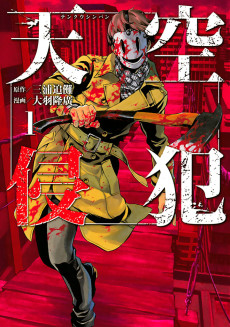 MANGA ActionTenkuu Shinpan
MANGA ActionTenkuu Shinpan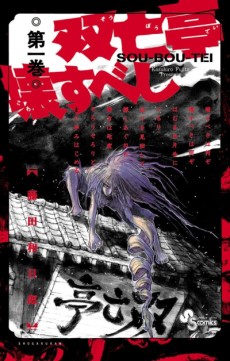 MANGA ActionSouboutei Kowasubeshi
MANGA ActionSouboutei Kowasubeshi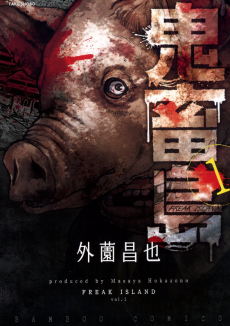 MANGA ActionKichikujima
MANGA ActionKichikujima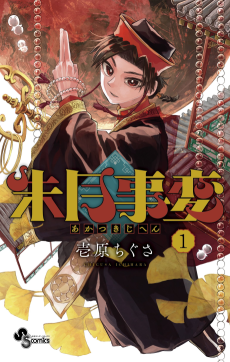 MANGA ActionAkatsuki Jihen
MANGA ActionAkatsuki Jihen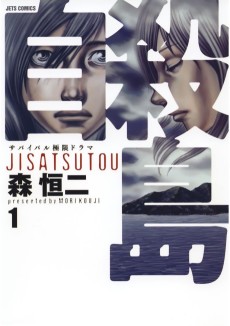 MANGA DramaJisatsutou
MANGA DramaJisatsutou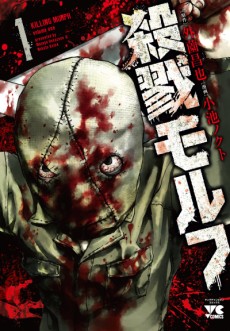 MANGA ActionSatsuriku Morph
MANGA ActionSatsuriku Morph
SCORE
- (3.1/5)
MORE INFO
Ended inAugust 23, 2019
Favorited by 36 Users


